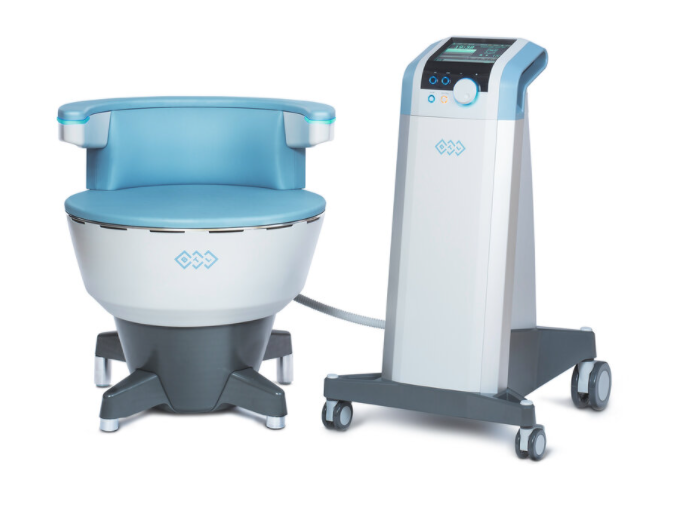The Emsella Chair
Managing incontinence
40% of women, and 11% of our men struggle with urinary incontinence. And for many Australians it is a hidden condition that dictates and controls their lifestyle.
It can also be a very restrictive condition, with people constantly needing to be aware of public toilet locations, constantly finding excuses for having to go to the loo all the time, and eventually declining invitations because of the embarrassment.
If you can’t control your bladder, or you can’t get it up, then you may just want to try out the Emsella chair. We are happy to announce that Toowoomba Obstetrics and Gynaecology now have Toowoomba’s only Emsella chair.
If you’ve been diagnosed with a weak pelvic floor, and you have a condition that affects incontinence and sexual dysfunction, then you will certainly want to give the Emsella chair a try.
The Emsella is a painless, non-invasive treatment that is developed to strengthen the pelvic floor muscles.

The Emsella is suitable for the treatment of a range of conditions, including:
Stress Urinary Incontinence (SUI)
Bladder leakage when you cough, laugh, jump, sneeze, or when there is pressure on the bladder.
Stress incontinence can be caused by pregnancy or a vaginal birth, obesity, surgical treatments, including a hysterectomy, or from age related loss of muscle strength.
Urge Urinary Incontinence
A sudden urge to urinate, followed by an involuntary bladder release.
Urge incontinence can be caused by neurological conditions, or inflammation of the bladder.
Overflow incontinence
A slow constant leaking of urine, due to the bladder not emptying completely.
Post-Prostatectomy
A prostatectomy is the surgery that removes a part, or the whole of the prostate gland, in the treatment of prostate cancer.
Hypoactive Sexual Desire Disorder (HSDD)
HSDD is the lack of sexual fantasies or desires, causing distress in relationships.
Erectile Dysfunction
The pelvic floor muscles support your pelvic organs, including the bladder, rectum, and prostate. Weakness of the pelvic floor muscles may lead to erectile dysfunction and premature ejaculation.
Post-Childbirth Recovery
Other causes of incontinence include the use of certain medications, excessive alcohol or drug use, anatomical defects, urinary tract infections, or injury.
Emsella Chair FAQs
Am I a suitable candidate for the Emsella chair?
The Emsella treatment is ideal for both men and women who are dealing with urinary incontinence. The chair achieves the same results as what you will get by doing kegel exercises, and it is an ideal non-invasive alternative to surgery.
The Emsella is perfect for new mothers suffering from urinary incontinence following childbirth.
How long does the treatment take?
The average session takes about 30 minutes. Most people will experience immediate results, but an ideal course will include six sessions of two sessions a week.
What is the sensation I can expect?
You will experience pelvic floor muscle contractions, presenting as a tingling feeling in your pelvic floor.
What happens after my session?
The Emsella is a non-invasive procedure, and you will be fully clothed during your session. You will start to experience results immediately after your session, and you can continue with your daily activities as soon as the session is over.
How long before I can see results?
You will start to experience results immediately after your session, and you can continue with your daily activities as soon as the session is over.
How do I sign up for the Emsella chair?
If you are living with any of the highlighted conditions, and you think that the Emsella chair might be for you, then you can ask your GP to refer you to Dr Lanziz Homar at Toowoomba Obstetrics and Gynaecology.

